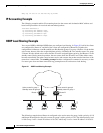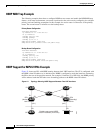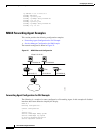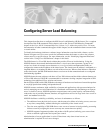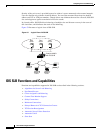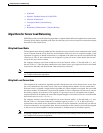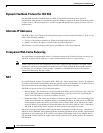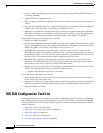
IPC-133
Cisco IOS IP Configuration Guide
Configuring Server Load Balancing
This chapter describes how to configure the IOS Server Load Balancing (SLB) feature. For a complete
description of the SLB commands in this chapter, refer to the “Server Load Balancing Commands”
chapter of the Cisco IOS IP Command Reference, Volume 1 of 3: Addressing and Services. To locate
documentation of other commands that appear in this chapter, use the command reference master index
or search online.
To identify the hardware platform or software image information associated with a feature, use the
Feature Navigator on Cisco.com to search for information about the feature or refer to the software
release notes for a specific release. For more information, see the “Identifying Supported Platforms”
section in the “Using Cisco IOS Software” chapter in this book.
The SLB feature is a Cisco IOS-based solution that provides IP server load balancing. Using the
IOS SLB feature, the network administrator defines a virtual server that represents a group of real
servers in a cluster of network servers known as a server farm. In this environment the clients are
configured to connect to the IP address of the virtual server. The virtual server IP address is configured as a
loopback address, or secondary IP address, on each of the real servers. When a client initiates a connection
to the virtual server, the IOS SLB function chooses a real server for the connection based on a configured
load-balancing algorithm.
IOS SLB shares the same software code base as Cisco IOS software and has all the software features sets
of Cisco IOS software. IOS SLB is recommended for customers desiring complete integration of SLB
technology into traditional Cisco switches and routers.
On the Catalyst 6500 switch, IOS SLB takes advantage of hardware acceleration to forward data packets
at very high speed when running in dispatched mode.
IOS SLB assures continuous, high availability of content and applications with proven techniques for
actively managing servers and connections in a distributed environment. By distributing user requests
across a cluster of servers, IOS SLB optimizes responsiveness and system capacity, and dramatically
reduces the cost of providing Internet, database, and application services for large-scale sites as well as
small- and medium-sized sites.
IOS SLB facilitates scalability, availability, and ease of maintenance as follows:
• The addition of new physical (real) servers, and the removal or failure of existing servers, can occur
at any time, transparently, without affecting the availability of the virtual server.
• The slow start capability of IOS SLB allows a new server to increase its load gradually, preventing
failures caused by assigning the server too many new connections too quickly.
• IOS SLB supports fragmented packets and packets with IP options, buffering your servers from
client or network vagaries that are beyond your control.
Administration of server applications is easier. Clients know only about virtual servers; no
administration is required for real server changes.




